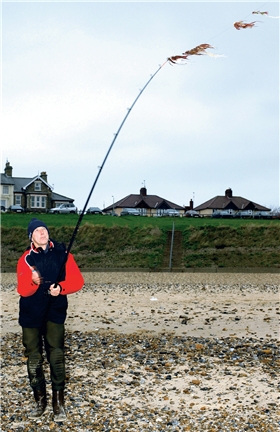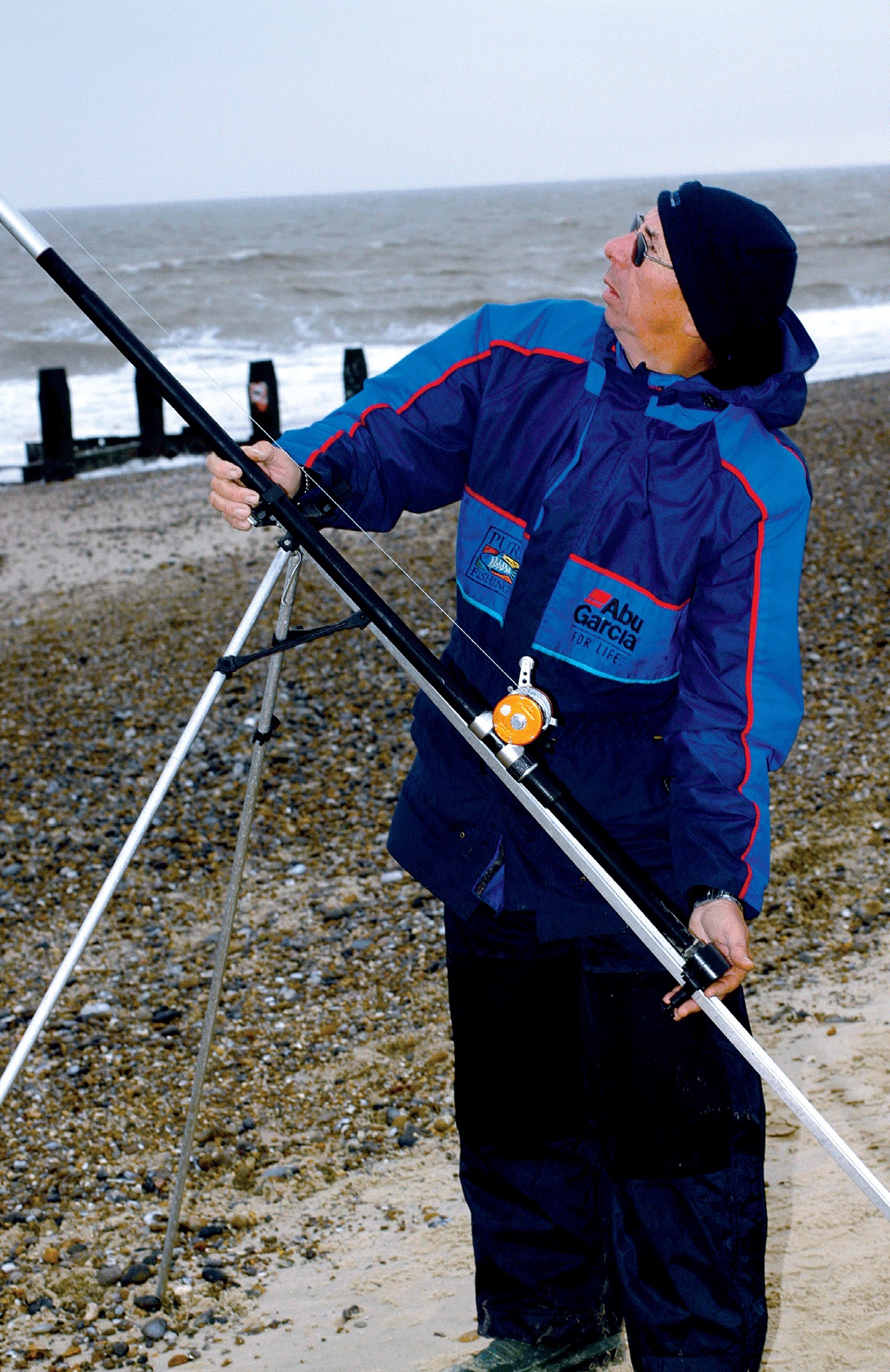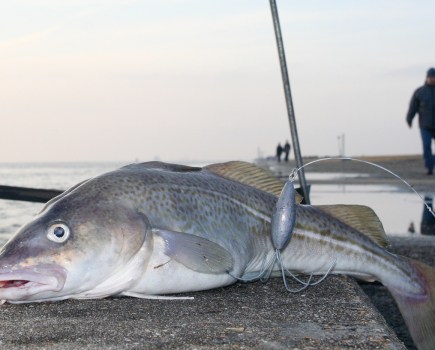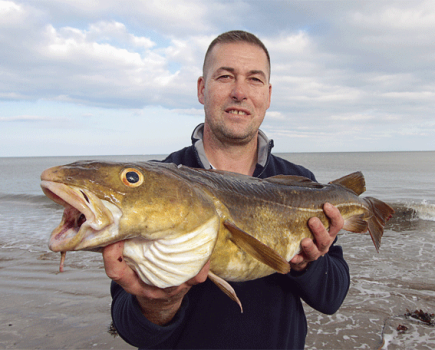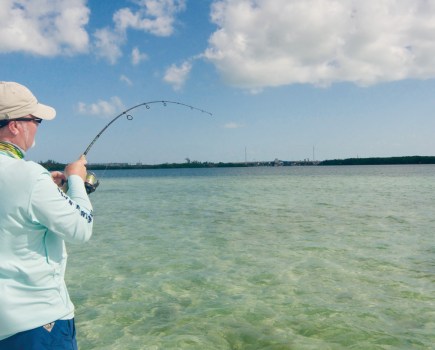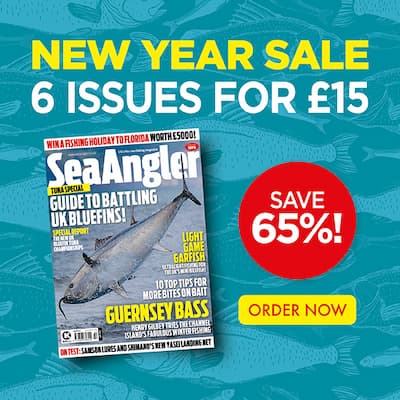Sea angling is not all about fishing when the weather is fine. Sooner or later you will face strong winds, stormy seas, rafts of weed, torrential rain and salt-laden spray, which can ruin expensive tackle. Here’s some useful advice to keep you fishing…
ROD SAFETY RULES
Strong winds are particularly dangerous because a strong gust can toss your rod aside leaving it to crash onto the beach, promenade or sea wall.
Lumps of weed being driven by wind and tide can do much the same thing.
In most cases you do not need to tie your rod down, but simply position it so that the point of balance is well down the butt of the rod. Sticking the rod tip high in the air may improve bite indication but it puts your rod at greater risk from the wind.
When using a rod-rest or resting your rod on a railing or sea wall, never allow the point of contact to be below the central rod joint. Rest the rod nearer the tip end and well above the mid balance point.
The intermediate rings can be used to help keep your rod stable and in position or angled to suit bite spotting. In a strong tide or wind dig the legs of your rod-rest deep in the beach and angle both rod-rest and rod so they present the least resistance to the wind.
In extreme conditions a plastic bag full of stones hung from the rod-rest’s hook can help stabilise it, while piling stones or rocks around the rod-rest’s legs also helps.
If fishing a pier wall use a rubber car mat or your trolley handle to prevent the rod slipping and sliding along the wall, also angle the rod slightly against the pull of the tide. Some tackle dealers sell customised rubber or synthetic pier wall rests, which prevent the rod moving or rolling. For railings there are screw-on rod-rest devices available in tackle shops. In extreme condition secure your rod with an elastic luggage strap or even your rod bag.
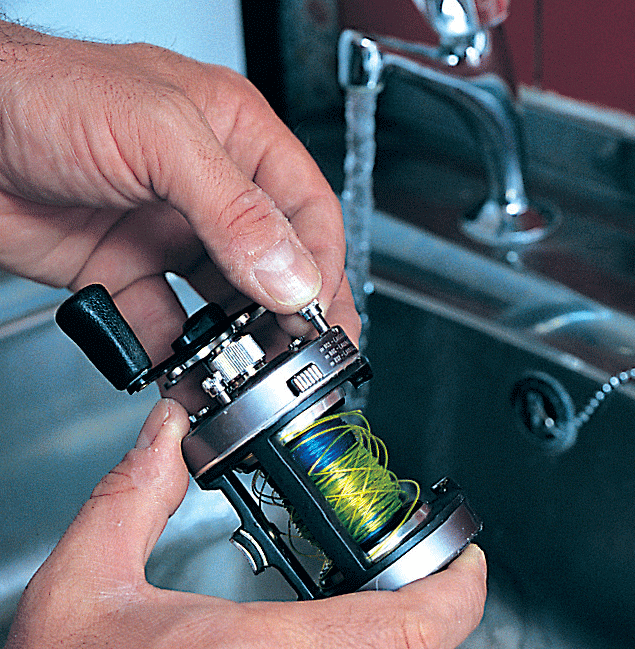
DO YOU ‘REELY’ CARE?
The obsession with distance casting has ruined many reels because anglers took notice of the field casting hype about removing grease or using this or that magic ‘go faster’ oil.
The advice to remove some of the brake system magnets has further complicated the issue.
For general fishing it is not advisable to strip reels of grease or oil, this helps keep out the saltwater and corrosion. Re-oiling a multiplier reel is not that important in terms of everyday distance, a quality reel with bearings will retain oil for a considerable time and it’s only a few of the faster models that need any special lubrication.
Magnetic brakes work superbly and the slide adjustment that moves the tiny magnets closer or further away from the spool is adequate.
Magnets should not be removed unless you fully understand the reel’s working parts and your casting needs.
If you do take out the odd magnet then watch out because once released all the magnets will automatically clamp together.
Fixed-spool reels are easier to maintain because they have less crucial moving parts and have fewer places for salt, fine sand and water to enter. They also allow you to swap spools quickly, useful if you have just had a snap-off and lost a lot of line.
The low reel position can be particularly destructive to all models because it puts them closer to the beach, concrete etc and it’s a good idea to take this into account when deciding the length of a rod butt extension (reducer) or fixing a reel seat to a rod butt. Above 12in and the reel is relatively safe from harm.
Don’t allow your reel to be immersed in seawater; even the best reels don’t like swimming, especially if they are then left sad and wet inside a tackle box.
If your reel gets dunked wash it out and allow it to dry before returning to the tackle box.
CARE OF MAINLINE
Line suffers from considerable wear and tear, especially the lower diameter mono under 0.40mm/20lb. Mono will also discolour with use and this is the time to consider replacing it.
Look out for abrasion, nicks and flattening or twists in the line. Modern copolymer lines are particularly tough and abrasion resistant, but it is a false economy to keep a line for too long and could cost you that special fi sh.
Larger diameter lines are tougher and will last longer on the spool, while braid line is especially tough and knock resistant and will last longer than mono, although for shore fishing you can only use it on fixed spool reels.
Most anglers find it essential to completely replace line after a number of fishing trips. You can save on costs by buying line on bulk spools, another way to economise is to remove line from the spool and reverse it so the unused stuff comes into use.
Never use a line with a knot in it other than the leader knot. Knots encourage tangles and overruns, are a potential weak point and may damage your finger when casting.
Take special care when reeling line on a fixed-spool reel. It’s essential to wind the line on the spool so that any loops or twists are removed or else they will remain and the line will coil as you cast.
TACKLE FIRST AID
Accidents do happen while your fishing – things like rings get broken or chipped or reel seats jam. Be prepared by carrying a small stick of Hot Melt glue and lighter so you can replace a broken or loose tip ring.
Simply heat the ring with the lighter flame to remove it. Remember it will be hot so use pliers, rather than your fingers. Heat the glue and melt into the tube of the new tip ring and replace, remembering to line it up with the intermediate rings before the glue sets. You do carry a spare tip ring, don’t you?
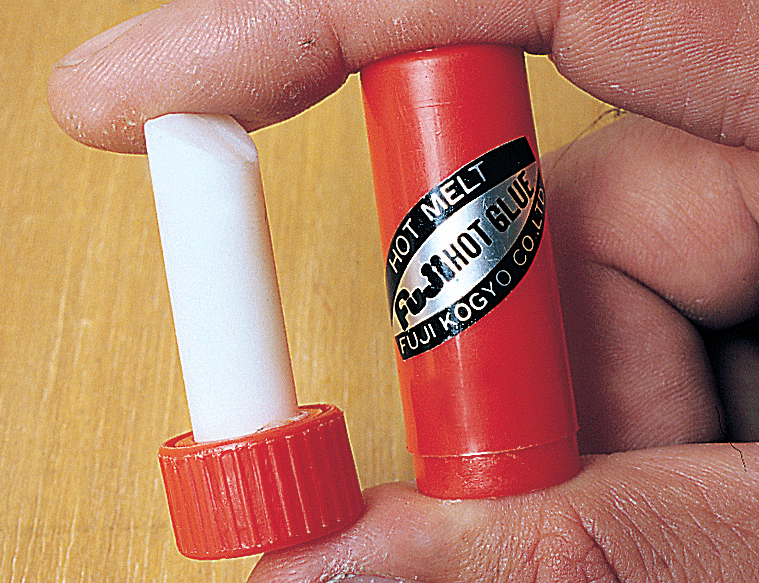
A roll of PVC tape can deal with a catalogue of angling disasters including replacing intermediate rod rings or securing a plaster over a cut, while a spare intermediate ring or a set of emergency coasters can all help to keep you fishing, especially when you are far from home.
To replace an intermediate rod ring only cut one side of the whipping. Wriggle the ring foot free and then insert the replacement ring foot in the whipping that remains. Then you tape everything together as an emergency repair.
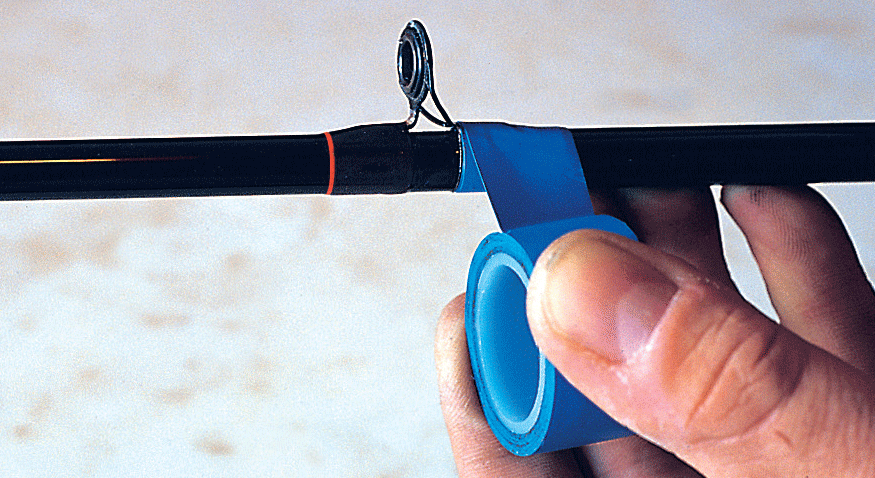
TIPS FROM THE EXPERTS…
A stable aluminium tripod with a sliding butt cup helps keep your rod safe in a rough weedy sea. It can be used to raise your rod tip high above the surf to avoid weed and swell from pulling the lead weight free or tipping over the rod.
Avoid small tip rings if fishing a weedy sea because these jam a weeded leader knot.
To remove weed from the line while reeling in, hit the side of your rod sharply with your palm. This will knock off much of the loose weed and allow you to continue retrieving your line.
Take care when reeling in large clumps of weed and do not put the strain directly on the reel. Lift the rod to pull the weed in and then reel as you lower the rod to take up the slack. Known as pumping, it is an easy way to retrieve heavy weights, including fish.
Line diameters have a major effect on your casting range and control of tackle in wind and tide. Low diameter lines cut through the tide and wind a lot easier.
Fishing a clean beach at long-range? Then fi sh with mono between 0.30mm (12lb) and 0.38mm (18lb) to be effective.
